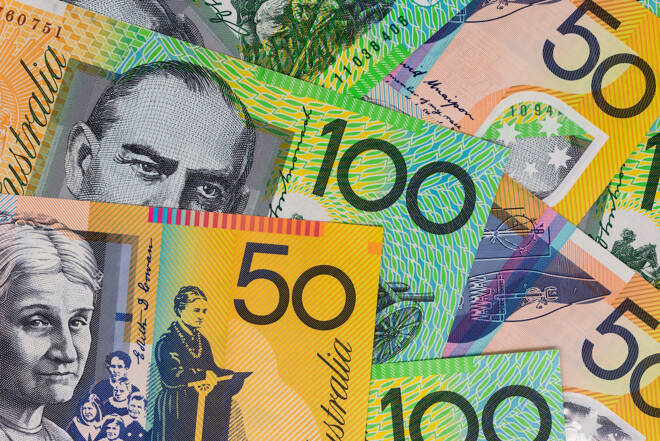Advertisement
Advertisement
AUD to USD Forecast: Sub-$0.65 Hinged on US CPI Report
By:
It is a big day ahead for the AUD/USD, with the heavily anticipated US CPI Report in focus. Hotter-than-expected figures will send the AUD/USD south.
Highlights
- This morning, we expect market distraction as investors prepare for the US CPI Report.
- Hotter-than-expected inflation numbers would reignite bets on a September Fed rate hike that would sink the AUD/USD.
- The near-term technical indicators remain bearish, signaling a return to sub-$0.65.
On Wednesday, the AUD/USD fell by 0.24% to end the day at $0.65280. Consumer price inflation and producer price index numbers from China provided early support. However, US inflation jitters led the Aussie into the red later in the day.
This morning, there are no economic indicators from Australia or China to influence. The lack of economic indicators will leave the Aussie dollar in the hands of market risk sentiment throughout the morning session. Disappointing economic indicators from China and the threat of an Australian economic recession will likely be considerations.
S&P Global Ratings released an Economic Research piece on Wednesday noting,
“It is possible, but not certain, that the economy can manage a soft landing, with inflation decreasing to the Reserve Bank of Australia’s target range without a major downturn and sustainable rise in unemployment.”
It is worth noting the Australian economy is dependent upon trade. Notably, the Australian Trade to GDP ratio stood at 45.8% in 2019 before declining as global trade terms deteriorated. As an exporter of commodities, weak global demand would adversely affect the Australian trade balance, the economy, and the Aussie dollar. Importantly, trade provides circa 20% of Australian jobs, a material consideration for the RBA.
The US Session
It is a big day ahead, with the all-important US CPI Report in focus. Hotter-than-expected inflation numbers would reignite bets on a September Fed interest rate hike, which could refuel recessionary jitters.
Economists forecast the US annual inflation rate to accelerate from 3.0% to 3.3% in July and for core inflation to hold steady at 4.8%.
Jobless claims figures will also draw interest. However, we expect the numbers to play second fiddle to the CPI Report.
While the Fed considers the Core PCE Price Index numbers a leading inflation indicator, the CPI Report carries significant weight. The Fed is looking for inflationary pressures to ease significantly to take its foot off the gas. Wage growth and tight labor market conditions remain risks to the inflation puzzle.
AUD/USD Price Action
Daily Chart
The Daily Chart showed the AUD/USD hover at the lower level of the $0.6545 – $0.6526 support band. Significantly, the Aussie remained below the 50-day ($0.66736) and 200-day ($0.67349) EMAs, sending bearish near and longer-term price signals.
The 50-day EMA fell further from the 200-day EMA, sending bearish price signals.
Looking at the 14-Daily RSI, the 37.55 reading signals a bearish trend and supports a fall through the 0.6545 – 0.6526 support band to sub-$0.65. However, an AUD/USD move through the 0.6545 – 0.6526 support band would give the bulls a run at the 50-day EMA ($0.66736) and the $0.6600 – $0.6620 resistance band.
4-Hourly Chart
Looking at the 4-Hourly Chart, the AUD/USD hovers at the lower level of the $0.6545 – $0.6526 support band. Significantly, the AUD/USD remains below the 50-day ($0.65875) and 200-day ($0.66704) EMAs, sending bearish near and longer-term price signals.
The 50-day EMA pulled back from the 200-day EMA, supporting a fall through the $0.6545 – $0.6526 support band to sub-$0.65. However, an AUD/USD move through the $0.6545 – $0.6526 support band and the 50-day EMA ($0.65875) would signal a breakout from the $0.6600 – $0.6620 resistance band to target $0.6650.
Looking at the 14-Daily RSI, the 43.88 reading signals a bearish trend and supports a fall through the 0.6545 – 0.6526 support band to sub-$0.65.
About the Author
Bob Masonauthor
With over 28 years of experience in the financial industry, Bob has worked with various global rating agencies and multinational banks. Currently he is covering currencies, commodities, alternative asset classes and global equities, focusing mostly on European and Asian markets.
Advertisement
